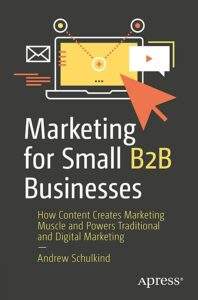Somewhere between the “greatest thing since sliced bread” hype and the doomsday scenarios where we all wind up chained to our desks in service of our AI overlords, lies the reality of AI’s promise and peril. At this point in its infancy, about the only mistake you can make is to ignore it. So let’s talk for a moment about how you can use it now and ways you may be able to use tools like Jasper, ChatGPT, the new Bing, and others in the near future.
Let’s start with a quick trip back to elementary school where maybe you had a teacher who tried to teach you the basic principles of coding or how to construct logical arguments with The Peanut Butter Sandwich Experiment.
This is where the teacher stands before the classroom with a jar of peanut butter and a loaf of bread from the supermarket and said, “Tell me how to make a peanut butter sandwich.”
The class call out instructions: “Put the peanut butter on the bread.” So onto the bag of bread goes the jar of peanut butter. “No, you have to open the peanut butter.” Off comes the lid and back onto the bag of bread goes the jar of peanut butter. And so on.
Eventually the grade schoolers catch on and get into the details of making a peanut butter sandwich. All those tiny steps you’ve done so many times you don’t even think about them.
That mindset, painfully familiar to computer programmers, is how you need to think about the instructions, or prompts, you give to your new AI assistant if you want its help in your marketing. ChatGPT and the other AI engines certainly have many more facts at their fingertips than a grade school class, but they may well know less about the marketing you’re trying to do.
The ability to use AI effectively comes down to how specifically you can write prompts. In many ways, it isn’t dissimilar to the way crafting good search engine queries has an enormous impact on the value of your search results.
Use Multiple AI Prompts for Best Results
Don’t expect to get the answer of your dreams on your first attempt. Use multiple prompts — not just to get the different answers to the same basic question — though that can be a valuable exercise, too — but to dive into different parts of your research separately.
This “ask again” approach will help you avoid creating articles that sound like the were written by a bot since, in coming up with the best series of prompts, you’ll be creating at least a basic outline of your article, rather than leaving that to the AI engine.
You’ll add more personality to the story if use your own thinking to craft the story that weaves your AI-found facts together. More on that below.
Make Your AI Prompts as Specific as Possible
Building on the idea of using multiple prompts, be sure to make your queries as specific as possible. The broader your prompt, the more generic your results. Which makes sense. If you know what you’re talking about, there’s a good chance you can dive into the details pretty specifically. If you don’t, then you should perhaps, ahem, learn a bit about the topic before writing about it.
For example, “please give me examples of marketing dashboards every company should have” isn’t likely to return results nearly as useful as asking about, “the most useful marketing dashboards for U.S.-based professional services businesses with $2 million to $10 million in annual revenue.”
Remember the Differences and Similarities Between AI and Search Engines
A search engine is a bit Socratic in that you ask it a question and it gives you a set of resources to review and evaluate. AI engines show off a bit more and give you the answer. That answer is no more or less likely to be wrong than a search engine’s, but it comes without context. You have no real sense of the sources for the engine’s response or how accurate they might be, unlike a search results page, where the sources are right in front of you.
Be sure to check the results of your AI queries. Currently, all of the AI engines I’ve tested have returned some absolute howlers — basic factual errors that would be hard to replicate on most topics with a search engine query.
Make AI-Generate Content Your Own
Finally, while your target audience is almost certainly in search of information to power some buying decision they are considering, they are also in search of a story. A BMW and a Mercedes may have very similar horsepower ratings, braking statistics, and features and amenities, but they are very different cars. Each has built a brand around their particular expertise and you must do the same with your marketing content.
Be careful not to strip away your marketing’s personality and humanity in an attempt to be more efficient.
As a test, I challenge you to create a prompt or series of prompts to write an article like this. I’d be surprised if it comes up with anything similar. If you do, I’d love to hear your results. Please share them with me.
Until then, I hope you’ll keep in mind that AI’s great danger isn’t it stealing your job. It’s the competitors who master its capabilities stealing your lunch.
Andrew Schulkind’s recently published book, Marketing for Small B2B Businesses – How Content Creates Marketing Muscle and Powers Traditional and Digital Marketing, is available on Amazon and elsewhere.

Photo by Milad Fakurian on Unsplash













